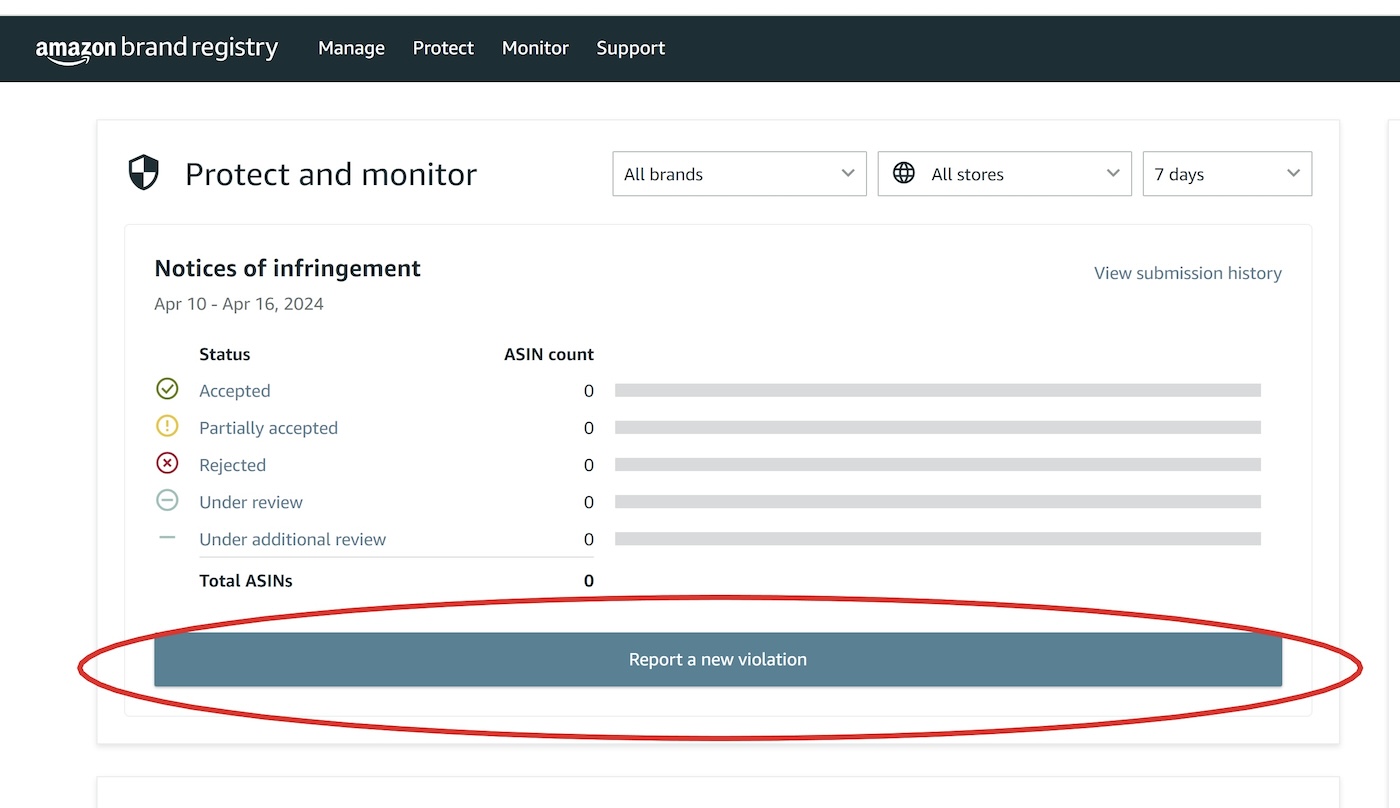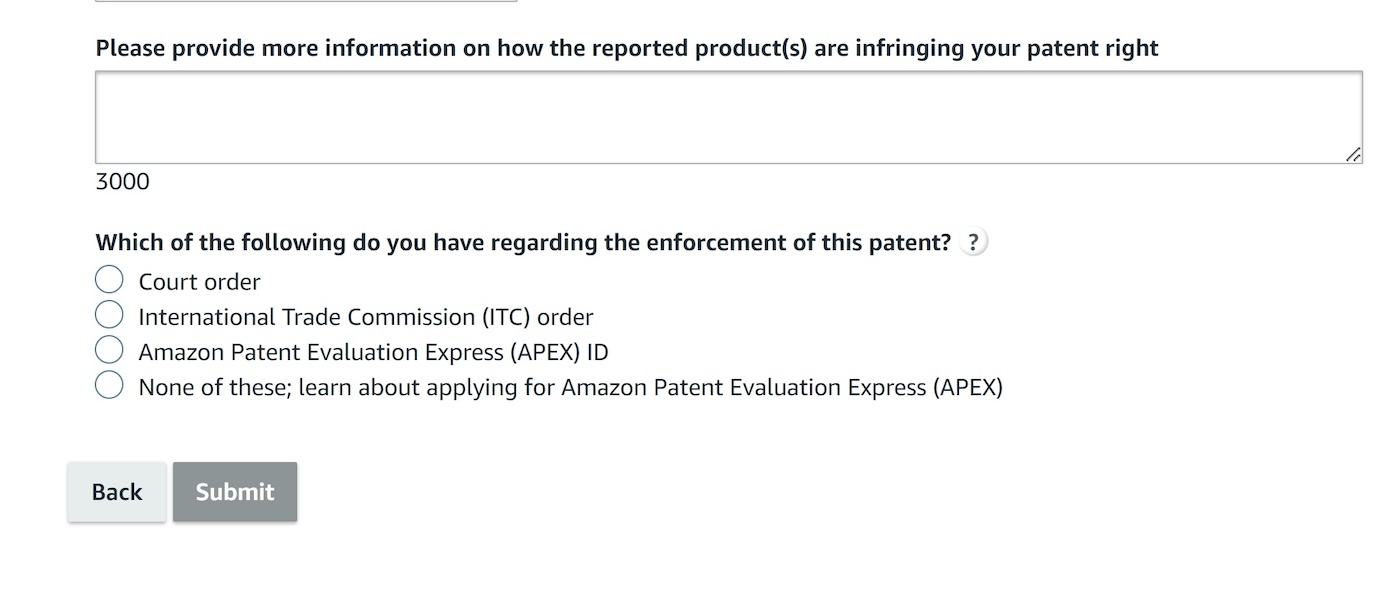Complete Overview Of The Amazon Patent Evaluation Express (APEX) / Neutral Patent Evaluation Process
At SGB, we’ve been through the APEX/neutral patent evaluation process both as the attorney for patent owners and as the evaluator. We’re glad to share what we’ve learned with you.
We’ll walk through the process, referring to “patent owner” and the “accused seller,” though the patent owner is also a seller.
What is it?
Amazon provides the APEX/neutral patent evaluation process to its sellers to efficiently handle a patent infringement dispute between sellers.
The only remedy is that the infringing products can be removed from listings on Amazon.com. To obtain damages or an injunction, the patent owner must sue in Federal district court.
What do I need?
- Be a seller on Amazon.com. Amazon offers this as a benefit only for its sellers.
- Enroll your brand in Amazon Brand Registry.
- An issued U.S. utility patent.
- A list of ASINs of the infringing products.
How does the process begin?
At the brand registry dashboard, the process starts with “Report a new Violation”

Critically, a short description of infringement is provided.

In SGB’s experience, this description is very important. Amazon evaluates requests to determine whether the patent is the type or kind of patent that fits the APEX process. Subsequent attempts can be more difficult if the request is denied at this stage.
Amazon will evaluate the request. In SGB’s experience, this process typically takes about a week.
What happens if Amazon accepts my request?
If Amazon accepts the APEX request, Amazon invites the accused seller to participate in the APEX process. Typically, the accused seller has 1-2 weeks to respond.
If the accused seller agrees to the APEX process, Amazon selects a neutral patent evaluator is to decide the infringement dispute. Amazon often selects patent attorneys with litigation experience for issues such as infringement and claim construction. SGB attorneys have been selected as neutral patent evaluators.
Both parties, the patent owner and the accused seller, provide $4,000 in escrow to the neutral patent evaluator. The evaluator will return $4,000 to the winner and keep the other $4,000 as a fee.
What happens next?
The patent owner submits a brief to prove infringement of the patent.
The accused seller submits a reply to disprove its infringement of the patent.
The patent owner has an answer or sur-reply in response.
The patent owner’s briefs can be 20 total pages long, divided however the patent owner wants between opening and reply briefs.
The accused seller’s reply can be 15 pages long. The page limits do not include claim charts.
The patent owner identifies a single claim for evaluation. Moreover, the accused seller can only use non-infringement as a defense. Other defenses, such as invalidity, unenforceability, and laches are not available.
With no discovery, the briefs are limited to publicly available information about the accused products, such as product listings, manuals, or pictures of the products. Reverse engineering and expert testimony is typically beyond the scope of the APEX process.
As in many questions of infringement, a critical issue to be briefed and decided is claim construction. SGB will blog in the future about these issues in the future.
How does the evaluator decide who wins?
The neutral patent evaluator decides whether it “is more likely than not that the products infringe the claim.” The decision text is usually quite short.
If the seller wins, the seller’s accused products remain on Amazon and the evaluator returns $4,000 to the seller.
If the patent owner wins, Amazon removes the seller’s products and the evaluator returns $4,000 to the patent owner.
Subsequent enforcement of a successful APEX victory against similar products may be possible. SGB has seen parties do this unsuccessfully when attempting on their own, and the success often depends on how the subsequent request is phrased.
After an unsuccessful APEX attempt, Amazon seems very unlikely to allow a second attempt. Accordingly, SGB recommends making the very best effort regarding choosing an asserted claim, evidence of infringement, and claim construction arguments in your attempt.
SGB can help
At SGB, we are experienced with the APEX/neutral patent evaluation program, both as neutral patent evaluators and represented patent owners to take down infringing products. While the APEX/neutral patent evaluation program is much more efficient than patent litigation, legal issues such as claim construction and divided infringement can and do affect the outcome of these cases. If you have an issued U.S. patent and someone is selling infringing products on Amazon, reach out to us to explore your options. In some cases, we can offer alternative fee arrangements (e.g., flat-fee or contingent-fee).
